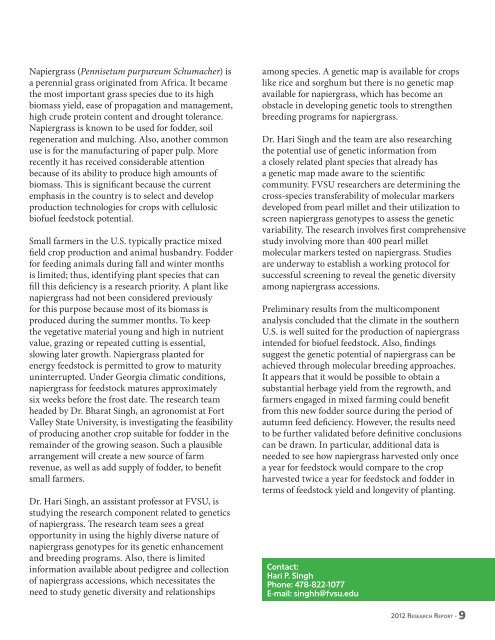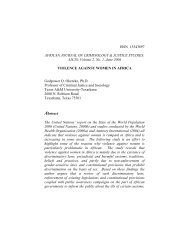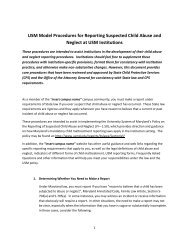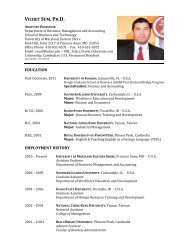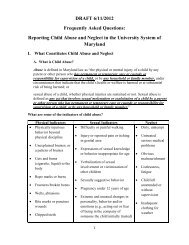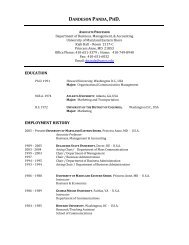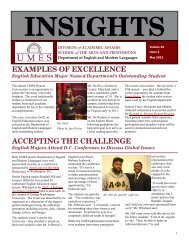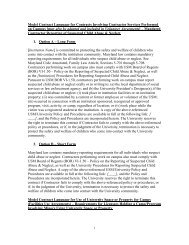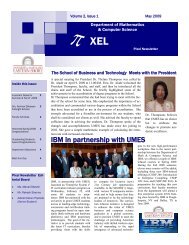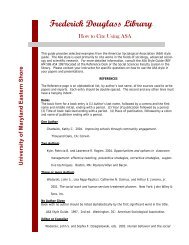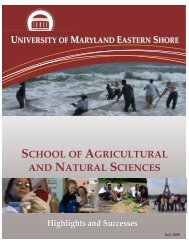FVSU Research Report 2012 - Fort Valley State University
FVSU Research Report 2012 - Fort Valley State University
FVSU Research Report 2012 - Fort Valley State University
Create successful ePaper yourself
Turn your PDF publications into a flip-book with our unique Google optimized e-Paper software.
Napiergrass (Pennisetum purpureum Schumacher) is<br />
a perennial grass originated from Africa. It became<br />
the most important grass species due to its high<br />
biomass yield, ease of propagation and management,<br />
high crude protein content and drought tolerance.<br />
Napiergrass is known to be used for fodder, soil<br />
regeneration and mulching. Also, another common<br />
use is for the manufacturing of paper pulp. More<br />
recently it has received considerable attention<br />
because of its ability to produce high amounts of<br />
biomass. This is significant because the current<br />
emphasis in the country is to select and develop<br />
production technologies for crops with cellulosic<br />
biofuel feedstock potential.<br />
Small farmers in the U.S. typically practice mixed<br />
field crop production and animal husbandry. Fodder<br />
for feeding animals during fall and winter months<br />
is limited; thus, identifying plant species that can<br />
fill this deficiency is a research priority. A plant like<br />
napiergrass had not been considered previously<br />
for this purpose because most of its biomass is<br />
produced during the summer months. To keep<br />
the vegetative material young and high in nutrient<br />
value, grazing or repeated cutting is essential,<br />
slowing later growth. Napiergrass planted for<br />
energy feedstock is permitted to grow to maturity<br />
uninterrupted. Under Georgia climatic conditions,<br />
napiergrass for feedstock matures approximately<br />
six weeks before the frost date. The research team<br />
headed by Dr. Bharat Singh, an agronomist at <strong>Fort</strong><br />
<strong>Valley</strong> <strong>State</strong> <strong>University</strong>, is investigating the feasibility<br />
of producing another crop suitable for fodder in the<br />
remainder of the growing season. Such a plausible<br />
arrangement will create a new source of farm<br />
revenue, as well as add supply of fodder, to benefit<br />
small farmers.<br />
Dr. Hari Singh, an assistant professor at <strong>FVSU</strong>, is<br />
studying the research component related to genetics<br />
of napiergrass. The research team sees a great<br />
opportunity in using the highly diverse nature of<br />
napiergrass genotypes for its genetic enhancement<br />
and breeding programs. Also, there is limited<br />
information available about pedigree and collection<br />
of napiergrass accessions, which necessitates the<br />
need to study genetic diversity and relationships<br />
among species. A genetic map is available for crops<br />
like rice and sorghum but there is no genetic map<br />
available for napiergrass, which has become an<br />
obstacle in developing genetic tools to strengthen<br />
breeding programs for napiergrass.<br />
Dr. Hari Singh and the team are also researching<br />
the potential use of genetic information from<br />
a closely related plant species that already has<br />
a genetic map made aware to the scientific<br />
community. <strong>FVSU</strong> researchers are determining the<br />
cross-species transferability of molecular markers<br />
developed from pearl millet and their utilization to<br />
screen napiergrass genotypes to assess the genetic<br />
variability. The research involves first comprehensive<br />
study involving more than 400 pearl millet<br />
molecular markers tested on napiergrass. Studies<br />
are underway to establish a working protocol for<br />
successful screening to reveal the genetic diversity<br />
among napiergrass accessions.<br />
Preliminary results from the multicomponent<br />
analysis concluded that the climate in the southern<br />
U.S. is well suited for the production of napiergrass<br />
intended for biofuel feedstock. Also, findings<br />
suggest the genetic potential of napiergrass can be<br />
achieved through molecular breeding approaches.<br />
It appears that it would be possible to obtain a<br />
substantial herbage yield from the regrowth, and<br />
farmers engaged in mixed farming could benefit<br />
from this new fodder source during the period of<br />
autumn feed deficiency. However, the results need<br />
to be further validated before definitive conclusions<br />
can be drawn. In particular, additional data is<br />
needed to see how napiergrass harvested only once<br />
a year for feedstock would compare to the crop<br />
harvested twice a year for feedstock and fodder in<br />
terms of feedstock yield and longevity of planting.<br />
Contact:<br />
Hari P. Singh<br />
Phone: 478-822-1077<br />
E-mail: singhh@fvsu.edu


